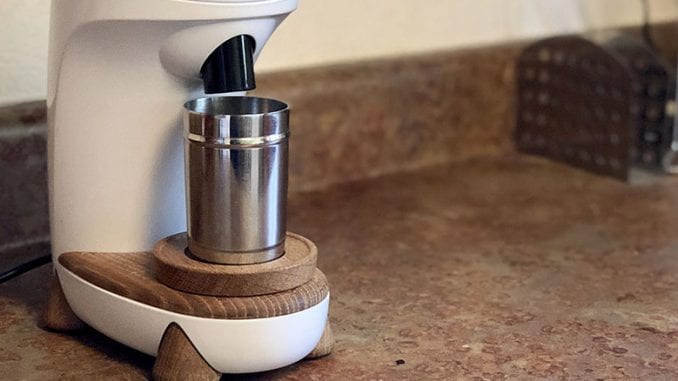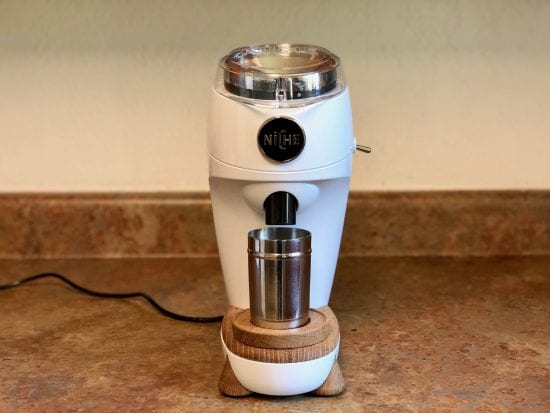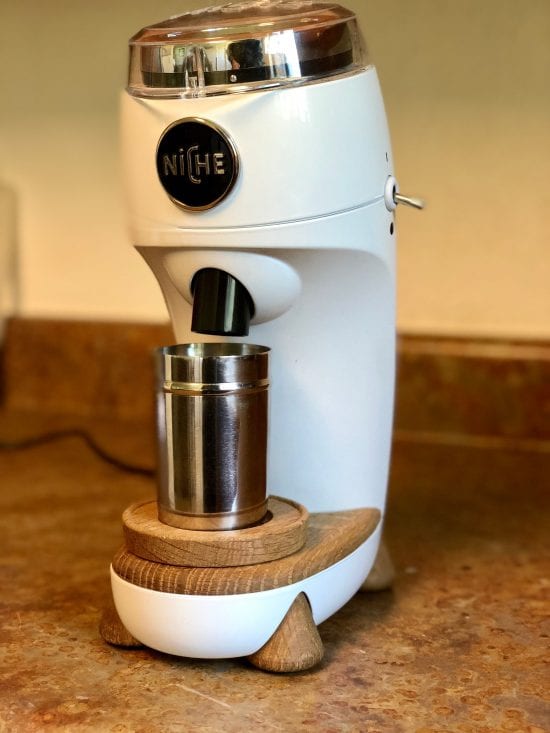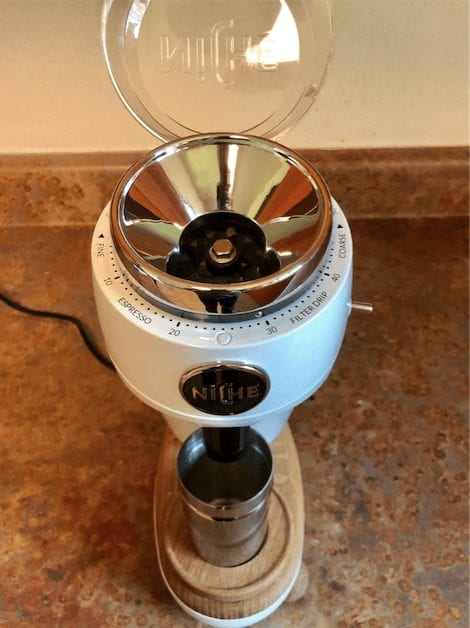
The Niche Zero is raising the bar for professional consumer grinders priced under $1,000.
BY JOSH TAVES
SPECIAL TO BARISTA MAGAZINE ONLINE
Photos courtesy of Josh Taves
Stop. Hold the phone. (Can you still do that?). The Niche Zero Grinder is the coolest new grinder you’ve probably never heard of. I know I hadn’t when Anita Tam, owner of Slow Pour Supply Co., reached out to see if I would like to get my hands on one for “Test Drive.” Headquartered in Houston, Slow Pour is the local U.S. distributor for the Niche Zero, whose 110v version just landed here in the States this fall. “Sure,” I thought. “I haven’t tried out a new electric grinder in a while,” not having any idea what the Niche was or the splash it has been making across the pond.

I still hadn’t done much research on the Niche when it arrived at my door and I unboxed it. The first thing that struck me was the weight and build quality of the grinder. I looked it over and was thoroughly impressed with the cast aluminum body of the grinder and the finish quality of the wood feet and removable grounds tray.
On top of that, the designers of the Niche worked to eliminate weak points by incorporating a monolithic design that has as few protruding parts as possible. Anyone who has ever moved an espresso grinder in their car or around their kitchen will understand the value in this, as it is very easy for parts to catch and break under the heavy weight of the grinder. The only place that I could see as a potentially weak or vulnerable spot was the on/off switch on the side of the grinder, which was much more heavy-duty than I would have expected. The plastic lid for the hopper sits low on the grinder and not only activates a safety switch that disengages the on/off switch; it also has a magnet that holds it closed during grinding. The lid also plays triple duty as a protective covering for the grind adjustment collar. Other than the lid, I could find no plastic pieces on this grinder upon external inspection.

“Wow, I had no idea this was such a high-quality grinder,” I said to my roommate. “How much does something like that cost?” he asked. Thinking back over many years of selling and servicing equipment of all types, I estimated $1,200 to $1,800. One of the most amazing features of the Niche grinder is that I was wrong. Crowdfunding supporters were able to get the Niche Zero on Indiegogo for $625! Speaking of Indiegogo, the creators of Niche Zero raised almost $1 million in funds to get their project off the ground. Slow Pour Supply has the grinder on a limited-time introductory offer of $680 through the month of November, and is currently sold out on its first stock. The next batch of grinders will still be available for pre-order when the next shipment arrives in late November. (The price changes to $840 once this special discontinues.)
Needless to say, the unboxing of the Niche was a pretty exciting event for me. I was pumped to start using the grinder, and after a few weeks of doing just that, I can attest that it lives up to the hype. The Niche Zero falls squarely into the “pro-sumer” category (professional-consumer—get it?) and works better than any other grinder in this category that I have ever used. The designers of the Niche set the grinder squarely into this category by utilizing a very low-profile hopper that only holds enough beans for a single cup of coffee or shot of espresso. In my time using the Niche, I’d estimate that the hopper holds about 50 grams of coffee. This keeps the grinder compact enough to fit on your kitchen counter but means that you must pre-weigh your doses, which you should be doing anyway.
Below the hopper are the 63mm conical burrs that are huge for a pro-sumer grinder and are impossible to miss. In my opinion, these burrs are the pinnacle of function for the Niche in that their design allows for nearly zero grounds retention. In my testing, the highest amount of grounds I lost in the grinder was .4 grams, and typically the loss was between 0 and .2 grams. This is extremely impressive for a sub-$1,000 grinder, in my experience.
The burr optimization also makes for a quiet grinding experience, so now you don’t have to worry about waking up your roommates for the sake of a fresh cup. The grind size seemed incredibly uniform and created a clear and crisp flavor profile in the cup. I always found the grounds to be fluffy and uniform. The stainless-steel grounds cup was awesome, with a small enough mouth that I could easily transfer the grounds into my AeroPress or portafilter without a funnel. To top it all off, the designers of the Niche included a removable grounds tray to make for an easy cleaning experience.

If you couldn’t tell, I like this grinder. I like it a lot. This might be one of my favorite pieces of equipment I’ve seen in awhile. The styling, intentional design, durability, and quality of materials make the Niche Zero grinder a steal at this price point. Put it in your café or on your kitchen counter and I guarantee you won’t be disappointed.

ABOUT THE AUTHOR
Josh Taves has been working in the coffee industry since 2006 and has worked as a barista, trainer, QC director, profile roaster, and green buyer. You can currently find him (or not find him) roaming the Rocky Mountains wherever the wind takes him. He is also the inventor of the Rattleware Cupping Brewer and a 2017 United States Barista Championship finalist.

